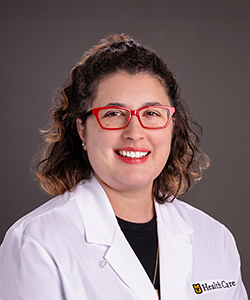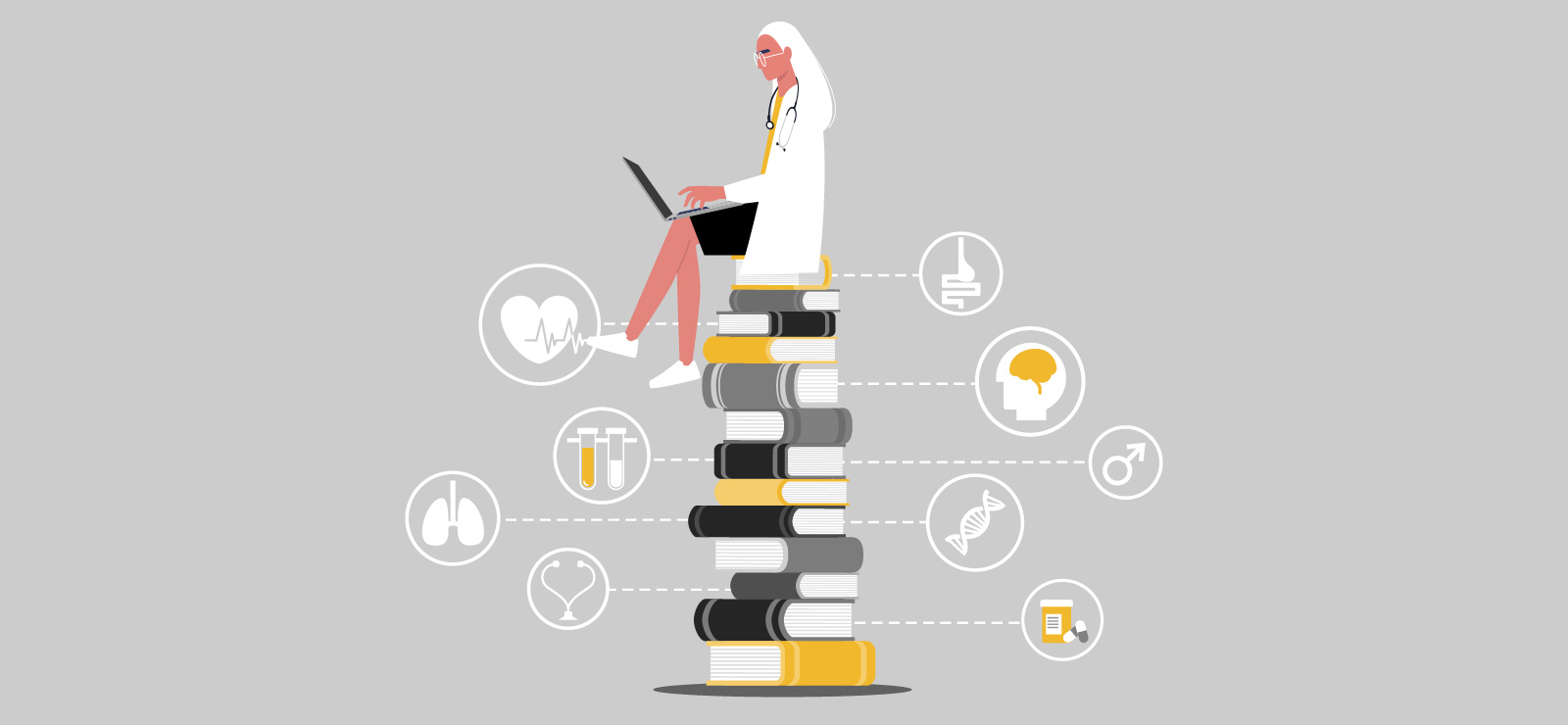January 29, 2024

Receiving a serious diagnosis can be terrifying. But situations when you can’t get a diagnosis can be just as scary.

The road to a diagnosis can be long — not to mention expensive — and much of that time is spent waiting. But while you wait, there is often a lot going on behind the scenes, says Dr. Sara Adams, who practices internal medicine and pediatrics at MU Health Care.
“No doctor wants their patients to have undue mental anguish or experience intense anticipation,” Dr. Adams says. “We want to provide answers, but we want to give those answers with a fully formed plan.”
Dr. Adams knows that living in diagnosis limbo can leave you confused, impatient and frustrated. But to alleviate your anxiety when you can’t easily get a diagnosis, she describes what may be going on while you’re waiting and how you can help move the process along.
How Doctors Approach Difficult-to-Diagnose Symptoms
Even though every diagnosis involves different symptoms, testing, individuals and outcomes, the process is often the same. And as a patient, you may only see a fraction of it.
“As I’m gathering information from a patient, I create a web in my mind,” Dr. Adams says. “I’m thinking about those specific symptoms and weaving in what I know about how our body systems connect and what constellation of symptoms correlates best with what illness.”
Dr. Adams’ approach to conditions that are difficult to diagnose includes three basic steps:
- Listening to the patient: Doctors want to learn about your symptoms and use that information to build the foundation for a diagnosis. The more they know, the quicker the diagnosis takes shape.
- Narrowing the direction: Doctors consider every possible option and then make a list (differential diagnosis) of all the possible conditions — typically ones that share similar or the same symptoms. That differential diagnosis guides the testing they order.
- Testing with a purpose: Any testing needed should be ordered to answer a specific question. Your doctor may suspect a few conditions and use the testing to rule things in or out.
When the diagnosis involves a child, Dr. Adams recommends parents pay close attention to symptoms so they can relay how often they happen, their severity and what treatment they’ve tried at home. Doctors look at different options when diagnosing children. But the process of reaching a diagnosis is the same.
Why It’s Hard to Diagnose Some Diseases
Not all conditions and disorders are easy to spot. A condition may be hard to diagnose because:
- Some conditions don’t have good diagnostic criteria: Some conditions and diseases, such as fibromyalgia or chronic fatigue syndrome, don’t fit into a neat little box. Imaging, blood tests or other definitive criteria can’t identify them.
- Diseases don’t follow a textbook: The same condition doesn’t always look the same in different people. How a disease presents can change depending on your age, gender, genetic makeup and other chronic conditions.
- The condition may be rare: Rare diseases are challenging to diagnose, especially in children, who comprise half of the 30 million people in the United States with a rare disease. It may take six to eight years for children to be diagnosed with a rare disease because of limited knowledge and clinical evidence related to that disease.
Common diagnosis delays
At times, your diagnosis or results may seem to take forever — and for no apparent reason. But often, that extra time helps ensure that the diagnosis is accurate and the recommended treatment is the most appropriate and affordable option.
Your testing, services or results may be delayed because:
- Insurance approvals take time: Your doctor may check which specialists and testing sites your insurance covers. Certain tests or services may require additional explanation before they’re approved.
- Physicians need time to interpret test results: Your doctor wants to be thorough. They may need to do more research or talk with the pathologist (lab specialist) who interpreted your test.
“It is not that you are forgotten,” Dr. Adams says. “It’s that something is happening in the background. There's typically a good reason, and you can certainly ask why it’s delayed.”
What to Do When You Can’t Get a Diagnosis
There are many ways patients can help during the diagnostic process beyond sharing their symptoms. Dr. Adams recommends that you:
- Advocate for yourself: What you are experiencing is not in your head. Keep asking questions and looking for answers. You aren’t bothering your doctor — they also want to diagnose your issue. Consider seeing someone different if you think your concerns are being overlooked or downplayed (brightsiding).
- Be truthful when talking to your doctor: Don’t downplay what you are going through. Be honest about how your symptoms are affecting your life. If your headache is daily, don’t explain it as “occasional” — small details can make a big difference.
- Compile a detailed family history: Knowing your family health history can help, especially if the condition is possibly rare or genetic. Ask older relatives if anyone has ever had a condition or symptoms like you’re experiencing.
- Expand your symptom log: A log of symptoms is helpful. But sometimes the things happening when you develop the symptoms are the key to the diagnosis. Did you eat something different? Travel somewhere? Keep track of what’s happening around you and not just the symptoms themselves.
- Look for more information: It’s okay to turn to Dr. Google when trying to provide your doctor with information. Share what you find. Explain what strikes a chord with you. It may shed some light on what you are experiencing.
- Trust your gut: Speak up if you disagree with your doctor’s conclusion. Explain to your doctor why you don’t think the condition is what they are suggesting. That insight can be helpful.
If you ever feel you’ve hit a dead end, take your case to someone else. “Never be afraid to ask for a second opinion,” Dr. Adams says. “Good doctors encourage their patients to get the help they need.”
What Happens When Doctors Can’t Diagnose You
There are situations where no diagnosis is reached. But that doesn’t mean your doctor won’t do everything possible to get you feeling better.
“Just because I can’t put a name on what you have does not mean you don’t have something going on. It just means we don’t have the science yet to know what it is,” Dr. Adams says. “But we can manage your symptoms and give you the best quality of life. My job is to help you be as healthy as possible, and we don’t always need a diagnosis to do that.”
Next Steps and Useful Resources
- Want to speak with a doctor? Find one today.


